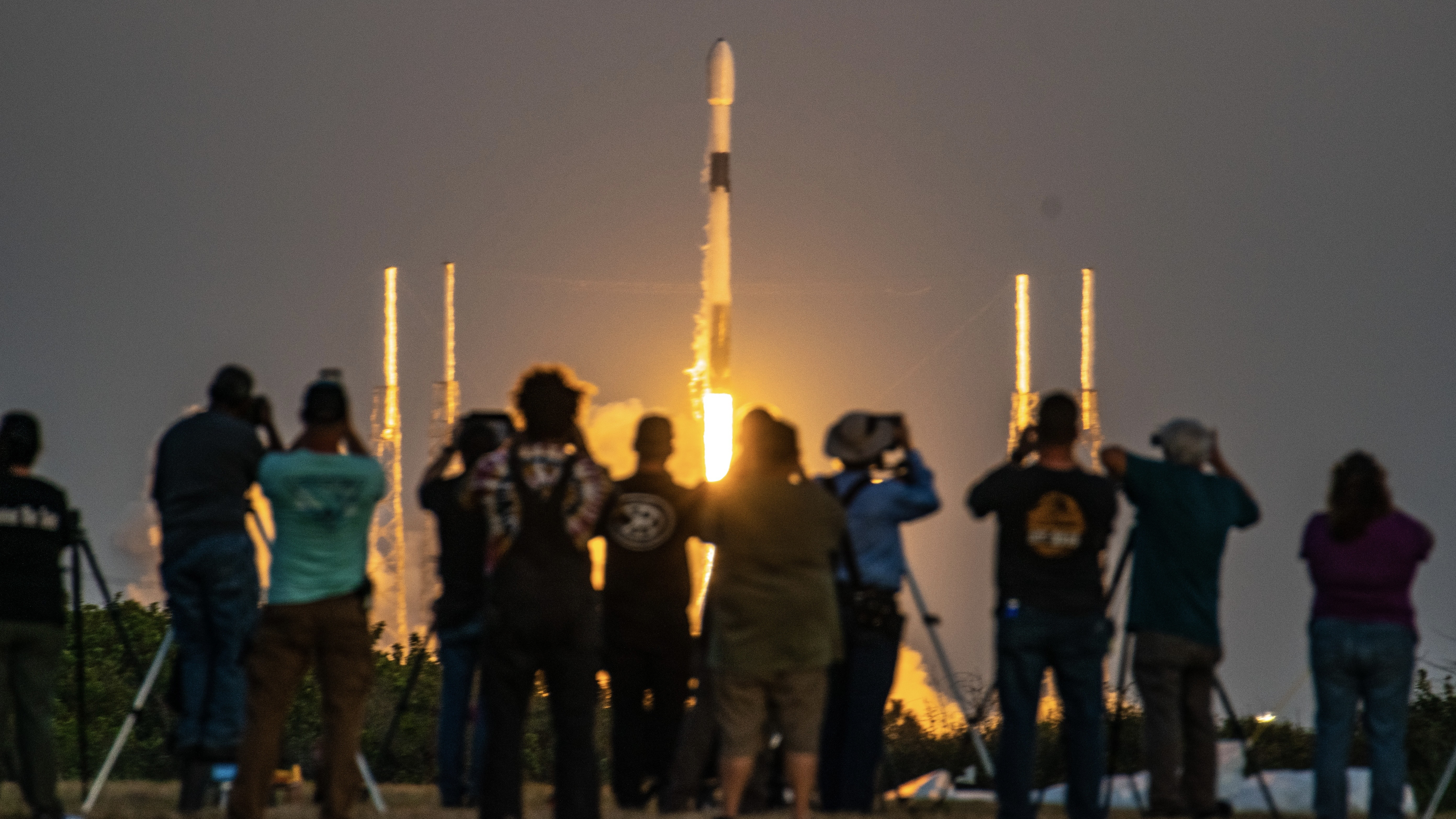
Stay tuned, SiriusXM radio listeners, your program is getting a signal boost.
SpaceX launched the SXM-9 satellite Thursday morning (Dec. 5), for SiriusXM satellite radio. The payload is the tenth spacecraft launched for SiriusXM, and the third of the company's satellites to ride a SpaceX Falcon 9 rocket to orbit.
Liftoff occurred at the beginning of the SXM-9 mission's 90-minute launch window, taking off from Launch Complex-39A (LC-39A), at NASA's Kennedy Space Center (KSC), in Florida, at 11:12 a.m. ET (1612 GMT).
Falcon 9's first stage booster returned several miles off Florida's Space Coast, landing on SpaceX's Just Read the Instructions drone ship in the Atlantic Ocean approximately 8.5 minutes after liftoff. "There you have it!" a SpaceX spokesperson declared during the mission's livestream as the booster touched down on the floating drone ship. "That landing marks SpaceX's 180th successful recovery of an orbital class rocket, including the first stage landings for both Falcon nine and Falcon Heavy," he said, indicating that this was also the 100th landing for Just Read the Instructions.
This was the 19th flight for this particular booster, shortening the gap between it and SpaceX's most flown booster, which currently holds the record at 24 flights. This booster's previous flights include 10 Starlink launches, as well as the CRS-26 cargo mission to the ISS, OneWeb Launch 16, Instelsat IS-40e, O3B mPOWER, Ovzon 3, Eutelsat 36D, Turksat 6A and Maxar 2, according to SpaceX.
After separating from its booster, Falcon 9's upper stage carried the satellite into a geosynchronous transfer orbit, where it was released from the rocket about 34.5 minutes after liftoff to fly to its final orbital position under its own power.
SXM-9 measures 27 feet (8 meters) tall, and stretches to 100 feet (30 meters) long with its two solar panel arrays unfolded. The satellite was designed and manufactured by Maxar Technologies, and based on Maxar's SSL-1300 satellite bus. The last SiriusXM satellite mission occurred in 2021, launching SXM-8. That satellite, and its predecessor SXM-7, which launched the previous year in 2020, were both meant to replace a pair of aging Sirius satellites, XM-3 and XM-4.
SXM-7, however, was declared lost in orbit about a month after launching, prolonging the expected use for the aging satellites, which both launched in 2005.
Though the satellite radio company's service to its customers was unaffected by the loss of SXM-7, and XM-3 and XM-4 have continued to operate nominally, the addition of SXM-9 stands to add some robustness to the high-powered radio satellite network.
Editor's note: This story was updated at 11:50 a.m. ET on Dec. 5 with the news that this launch sent the SiriusXM-9 satellite to orbit.







